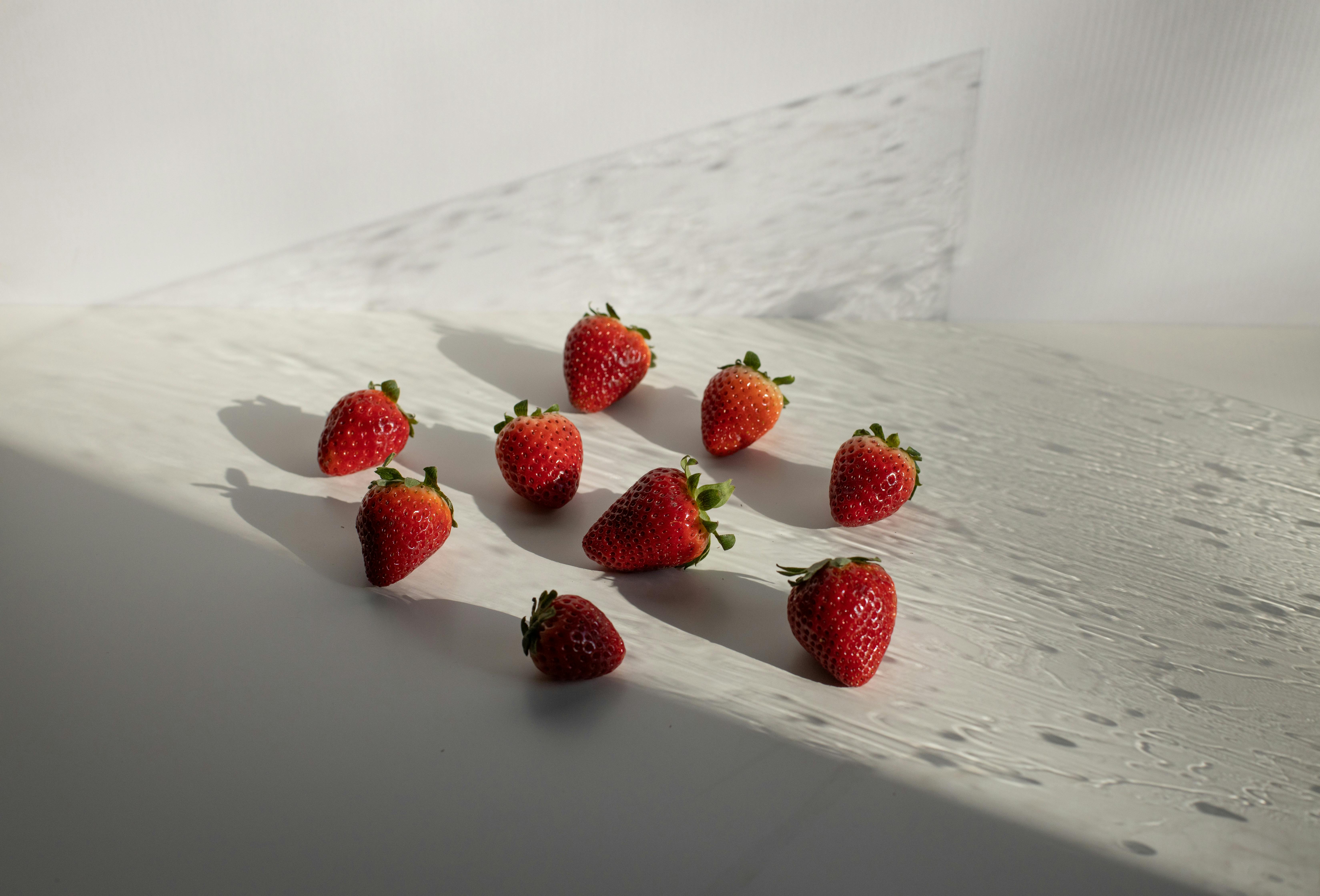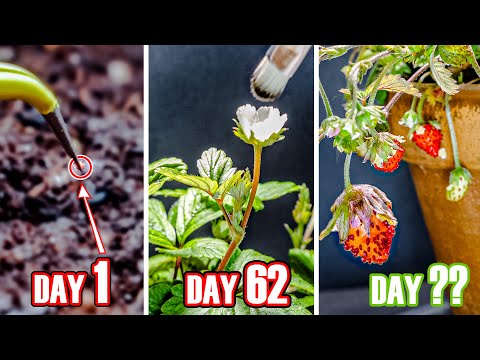Strawberries are one of the most popular fruits in the world and are a favorite of both children and adults alike. But how long do strawberry plants live? This is an important question to ask when considering growing your own strawberry plants. This article will provide an overview of the lifespan of a strawberry plant, including factors that can affect its longevity. You will also learn about some tips for encouraging the health and longevity of strawberry plants.Strawberry plants usually live for 2 to 3 years. After that, the plants begin to decline in vigor and production, and will need to be replaced.
Climate
One of the major factors that affect the lifespan of a strawberry plant is the climate. In mild climates, strawberry plants can live for up to 3 years, while in harsher climates they may only last one year. Strawberry plants also need adequate amounts of sunlight and protection from wind and extreme temperatures. Without proper sunlight and protection from wind and extreme temperatures, the plants may not survive even in mild climates.
Soil Quality
The quality of soil is another important factor that affects the lifespan of a strawberry plant. The soil must be moist and well drained, as too much moisture can cause root rot. The soil should also be slightly acidic with a pH level between 5.5-6.5. If the pH level is too high or too low, it can inhibit nutrient uptake by the roots, which can lead to disease and poor growth.
Fertilization
Fertilization is also an important factor that affects how long a strawberry plant will live. Proper fertilization ensures that the plant has adequate nutrients to grow and produce fruit. Too much fertilization, however, can cause nutrient burn, which will reduce yields and shorten the lifespan of the plant.
Pest Control
Pest control is also an important factor in determining how long a strawberry plant will live. Plant diseases can spread quickly if left unchecked, leading to decreased yields or even death of the plant. Regular inspection for pests such as aphids or mites should be done to ensure good health of the plants.
Overall, climate, soil quality, fertilization and pest control are all important factors that affect how long a strawberry plant will live. With proper care and attention to these factors, a healthy strawberry plant should be able to produce fruit for several seasons before needing to be replaced with new plants.
Can A Strawberry Plant Live Year-Round?
Yes, strawberry plants can live year-round provided they have the right growing conditions. In order to do this, the plant must have access to sunlight and water for the entire year. Furthermore, the soil needs to be kept fertile and free of weeds. The temperature should also remain consistent throughout the year. If these conditions are met, then a strawberry plant can live year-round and produce fruit throughout the year.
In some regions, especially those with mild climates, strawberry plants are able to survive winter temperatures with minimal damage or loss of productivity. In these areas, growers have found success by mulching their strawberry beds with straw or leaves in order to insulate them from cold weather. This helps protect the plants from freezing temperatures while still allowing enough air circulation for them to thrive.
In other regions where winter temperatures regularly drop below freezing, growers may need to take additional steps in order to protect their plants from frost damage. One option is to use row covers or plastic tunnels over the strawberry beds in order to provide insulation and protection from freezing temperatures during the winter months. Alternatively, growers could choose to use cold frames or hoop houses which act as mini greenhouses that can help keep temperatures above freezing even when outdoor temperatures dip below zero degrees Celsius.
No matter what method is used for protecting strawberry plants during winter months, it is important that they receive adequate amounts of sunlight and water throughout the entire year in order for them to remain healthy and productive. If these conditions are met then a strawberry plant can live year-round and produce fruit throughout all four seasons!
How to Care for Strawberry Plants to Maximize Lifespan
Caring for strawberry plants is essential for ensuring they live a long and healthy life. Proper care of strawberry plants not only maximizes their lifespan, but also helps them produce more delicious berries. Here are some tips on how to care for strawberry plants to maximize their lifespan.
Firstly, you need to ensure that your strawberry plants get enough sunlight. They should receive direct sunlight for six to eight hours a day, depending on your climate. If the sun is too intense in your area, you can provide shade cloth or other similar protection. Additionally, make sure the soil in which they are planted is well-draining and rich in organic matter.
Secondly, strawberries need regular watering. Water them deeply once or twice a week, and supplement with additional waterings in hot or dry weather conditions. Make sure the soil doesn’t become soggy or waterlogged as this could lead to root rot and other diseases.
Thirdly, fertilizing your strawberry plants once a month with an appropriate fertilizer can help maximize their lifespan and improve yields. Use a balanced fertilizer such as 10-10-10 or 12-12-12 and follow the instructions on the package for application rates and frequency.
Finally, regularly check your strawberry plants for pests or diseases and take action immediately if necessary. You can use insecticides or fungicides to treat pests or diseases, but make sure you follow the instructions carefully when using them.
By following these tips on how to care for strawberry plants, you can help ensure that they live a long and healthy life while producing lots of delicious strawberries!
Can You Replant a Strawberry Plant After it Has Died?
It is possible to replant a strawberry plant after it has died. However, there are some important considerations to keep in mind before attempting to do so. To ensure that the plants have the best chance of successful replanting, it is important to understand the basic needs of strawberry plants and how they respond to different conditions.
The first step when attempting to replant a dead strawberry plant is to determine why it died in the first place. If the plant died due to disease or pests, it is important to take steps to ensure that any new plants are not exposed to these same elements. This might include removing infected parts of the plant, discarding soil in which it was planted, and taking steps to prevent any further spread of disease or pests.
When replanting a strawberry plant, it is important to choose a new location with similar characteristics as the previous location. This includes choosing a spot with similar levels of sunlight, soil type, and moisture levels as those where the original plant grew successfully. Additionally, if possible, try to choose an area with good drainage so that water does not pool around the roots of the plant.
When planting a new strawberry plant, make sure that it is planted at the same depth as its predecessor was planted at. Additionally, be sure that there is enough room around each individual plant for adequate air circulation and growth potential. Finally, make sure that any amendments or fertilizers used for planting are appropriate for strawberries and applied according to directions on their labels.
With proper care and attention given during replanting, there is potential for success in growing healthy strawberry plants even after they have died. However, if all other options have been exhausted without success then it may be time for a different approach such as starting over with healthy seedlings or cuttings from another source instead of attempting again with dead plants.

Pruning Your Strawberry Plant to Increase Lifespan
Pruning your strawberry plants can help increase their lifespan by making them more productive and healthier. Pruning helps to maintain a healthy plant structure, encourages fruiting, and reduces the risk of disease. It is important to prune your strawberry plants at least once a year, preferably in late winter or early spring. During this time, you should remove any diseased or damaged foliage as well as any dead or dying branches. You should also remove any suckers, or small offshoots that grow from the base of the plant, as these can reduce the overall size and productivity of the plant.
When pruning your strawberry plants, it is important to use a sharp pair of pruning shears or scissors to ensure a clean cut. Make sure to cut back the stems with an outward-facing bud so that new growth will occur in the desired direction. For established plants, it is best to remove up to one-third of the top growth each year to ensure good air circulation and light penetration for healthy growth.
In addition, it is important to keep your strawberry plants free of weeds and debris throughout the growing season in order to encourage healthy growth and fruit production. If left unchecked, weeds can choke out your plants’ roots and prevent them from accessing essential nutrients and water. Be sure to mulch around your strawberry plants with organic material such as straw or grass clippings in order to suppress weed growth and conserve soil moisture.
By following these simple tips for pruning your strawberry plants, you can help ensure that they will remain healthy and productive for years to come!
The Benefits of Planting Perennial Variety of Strawberries
Planting and growing perennial varieties of strawberries is a great way to reap the benefits of a delicious, healthy, and easy-to-grow fruit. Perennial varieties of strawberries are hardy plants that produce a crop year after year with minimal effort. They are also ideal for container gardening or small spaces, where their size can be controlled more easily. The advantages of planting perennial varieties over annual varieties include:
1. They produce larger and higher-quality fruit than annual varieties because they put more energy into fruit production each season.
2. They require less maintenance as they don’t need to be replanted each spring; they will continue to produce fruit for several years with little intervention from the gardener.
3. Perennial varieties are often disease-resistant, which means you won’t have to worry about common diseases like leaf spot or crown rot affecting your plants.
4. The plants often become established quickly and yield fruit in their first season, so you don’t have to wait as long for a harvest compared to annual varieties which can take up to two years before they start producing a harvestable crop.
5. Perennial strawberry plants also have deep roots which make them less susceptible to drought than their annual counterparts, meaning that you don’t have to water them as often during extended dry periods in the summer months.
Overall, perennial strawberry plants offer many advantages over their annual counterparts when it comes to growing an abundant harvest of delicious berries each season with minimal effort on the part of the gardener!
Growing Environment Impact Lifespan of a Strawberry Plant
The lifespan of a strawberry plant is heavily dependent on the growing environment. Factors such as temperature, soil quality, sunlight exposure, water availability, and pests can all influence the lifespan of a strawberry plant. For example, if temperatures drop below freezing for too long, the strawberry plant will be killed off. If soil is poor in nutrients or too wet or dry, the growth of the strawberry plant will be inhibited. If there is not enough sunlight exposure or too much sunlight exposure, the growth of the strawberry plant will also be inhibited. Pests such as birds and insects can also have an impact on the lifespan of a strawberry plant if not managed properly. In general, an ideal growing environment with adequate warmth, good soil quality, balanced sunlight exposure and water availability, and proper pest management will result in a longer lifespan for a strawberry plant.
Strawberry plants grown in less than ideal conditions may still produce fruit but may not survive for long periods of time. Poor soil quality can lead to nutrient deficiencies that stunt growth or cause disease which can shorten the lifespan of a strawberry plant. Too much cold or heat can also stunt growth and reduce fruit production. Too little or too much water can cause root rot which leads to death in some cases. Pests such as birds and insects can consume fruit before it ripens as well as damage foliage creating stress on plants that could lead to early death. All these factors should be taken into consideration when designing an optimal growing environment for strawberries to maximize their lifespan.

Conclusion
Strawberry plants have a relatively short life cycle. Depending on the type of strawberry plant, they can live anywhere from 6 months to 2 years. The most common type of strawberry plant is the June-bearing type, which typically has an average lifespan of 18 months. Day-neutral types usually last up to 2 years.
Strawberry plants need to be replaced every year or two in order to keep production levels high and maintain good fruit quality. Regular maintenance such as pruning, fertilizing, and pest control are also important for keeping a healthy crop of strawberries.
In conclusion, strawberry plants are short-lived but can produce abundant yields when properly cared for. Knowing the type and life span of your strawberry plants will help you get the most out of your crop and ensure that your plants remain productive for as long as possible.



